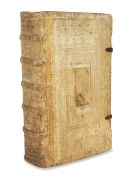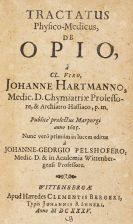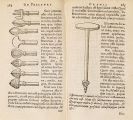
Frans Hals
Antwerpen
1580 -
Haarlem
1666
The Flemish painter Frans Hals, who was one of the most important portrait painters, was born in Antwerp between 1580 and 1585. His father was a draper in Antwerp. Up until 1603 Frans Hals was apprentice to the painter Carel van Mander. In 1610 Hals was admitted to the Sint Lucas Gilde, the Haarlem painters' guild, and married Annetje Harmansdr.
In 1611 their first son, Harmen, was born. After the birth of their second son in 1615, Hals's wife died in childbirth. Throughout his life Frans Hals suffered from poverty. The nurse, who cared for his children while they stayed in Antwerp even sued him for keep money. Frans Hals re-married in 1617, and had further eight children with his second wife, Lysbeth Reyniers.
After 1616 Frans Hals painted his most important portraits, pictures of the Haarlem civic guard. He worked on these paintings until 1637, when the commissions for pictures of the civic guard in Holland suddenly stopped. Subsequently, Frans Hals painted group pictures of hospital directors. In 1644 Hals became the chairman of the Haarlem painters' guild.
He painted a large number of individual portraits of important people. Hals produced portraits of René Descartes (1648) and the draper Willem von Heythuysen. During his lifetime, Frans Hals was highly respected and his clientèle reached far beyond the borders of Haarlem, but he did not achieve major fame.
After Peter Paul Rubens died in 1640 and Anthonis van Dyck in 1641, Frans Hals became the most important portrait painter in the Netherlands. Hals received important public commissions and painted portraits for private people, which reinforced his international acclaim.
Frans Hals is regarded as the main master of the Haarlem school of painting. Hals died in Haarlem on August 10, 1666. His painting "The Banquet of the Officers of the St. George Civic Guard", painted in 1616 is of particular importance.
Frans Hals produced genre paintings of drunkards, gypsies and women at work. His almost sketchy paintings were marked by a tremendous vitality and apt characterization. The Impressionists regarded Frans Hals as one of their predecessors.
Would you like to sell a work by Frans Hals?
Infos for seller










